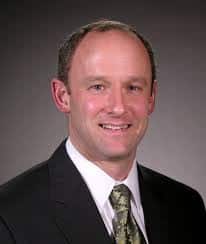
Public pension plans are faced with multiple challenges: making sure their plans are fully funded, coping with a low-yield environment, and finding the right asset allocation mix.
“Our biggest challenge is to be fully funded, and we have been good at adding contributions when the market was down the past few years,” said Bill Rodenbeck, investment manager, Gwinnett County (Ga.). “Our funding ratio is now 83.9%, and is actually better than that if you use market value of assets. We’ve been doing well with our returns.”
Gwinnett County has two plans: a, $850 million defined-benefit plan, and a $120 million health-benefit plan. “We were number one in our peer group for the past five years,” said Rodenbeck. “We have about 67% in equities, and our strategy is to diversify.”
With bond yields remaining low on a historical basis, it’s a big challenge. “We do have some international bond holdings, but our state law prohibits us from buying anything other than investment grade. We have added an emerging-market segment, which can go up to 5%,” Rodenbeck said.
Asset allocation is very much dependent of locale. In some jurisdictions, trustees have access to all asset classes, whereas in others, they might be restricted. Michigan changed its rules a year ago to allow a wider range of assets to be incorporated into the allocation.
“We’ve seen pressure on legislators to revisit their decisions,” said Jon Waite, chief actuary at SEI Institutional Group. “A lot of these plans have a good portion of their portfolio in fixed income, particularly a Barclays Aggregate type of allocation, which will be a drag on the portfolio if and when rates rise. I recommend that trustees ask what other options they have in the fixed income space. It’s not just Barclays Aggregate, high-yield and emerging market debt. There are a lot of other strategies, but they need to understand the impact of a low-rate environment.”

Jon Waite, SEI Institutional Group
Waite added, “These plans can be impacted by rising inflation, so they might want to consider inflation-protection plans as well.”
Gwinnett County tries to pick asset classes that are less correlated to equities and bonds. “We will consider some kinds of alternative investments down the road,” said Rodenbeck. “Our state law now allows us to use alternatives. We have tried to get active managers to provide excess alpha, and we have three or four managers that are in the top tier of their peer group.”
The county has reduced its large cap allocation from 37% to 25% of the portfolio, and put more money into mid-cap, small-cap and international. “The biggest challenge for public plans is to be fully funded, and not cut contributions when times are good,” said Rodenbeck.
Gwinnett County closed its plan to new employees in 2007, so its liabilities are somewhat controlled, but this is relatively uncommon among public pension funds, according to Waite.
“Trustees need to understand what levers they have to pull in order to better manage the plan, and fit it into the financial picture of the sponsoring entity, whether it’s a city, municipality, or state,” he said. “In the corporate sector, we see a lot of organizations freezing their plan. In the public sector, the ability to freeze plans is much less clear.”
A survey released by SEI found that defined contribution (DC) plan sponsors are evaluating their current target-date-funds (TDFs) and considering whether or not custom TDFs are a better option. Of those plan sponsors already offering TDFs, 12 percent currently use custom funds rather than proprietary or pre-packaged options.
The poll suggests that percentage is rising as more than a third (37%) of those surveyed said their organization is likely or somewhat likely to implement or revise custom target date solutions in the next 18 months.
Featured image via corund/ Dollar Photo Club






